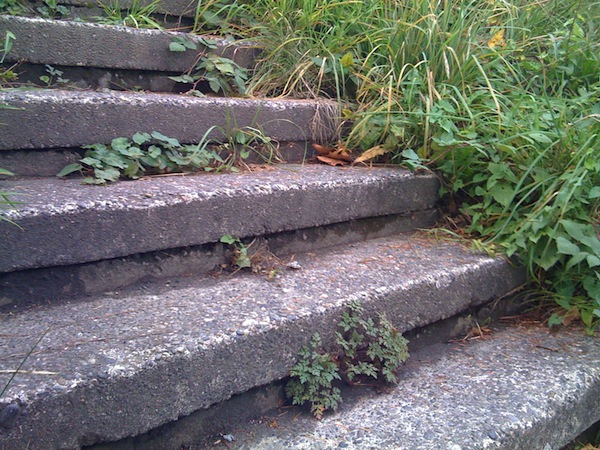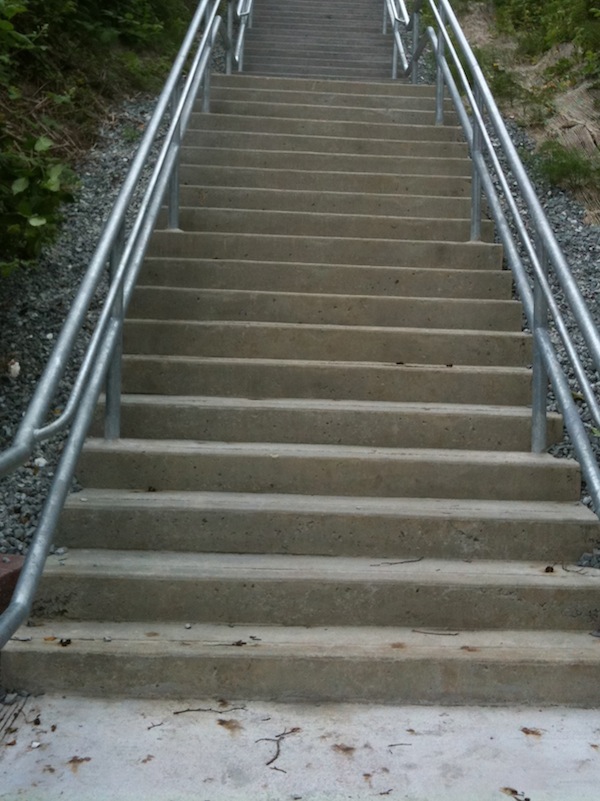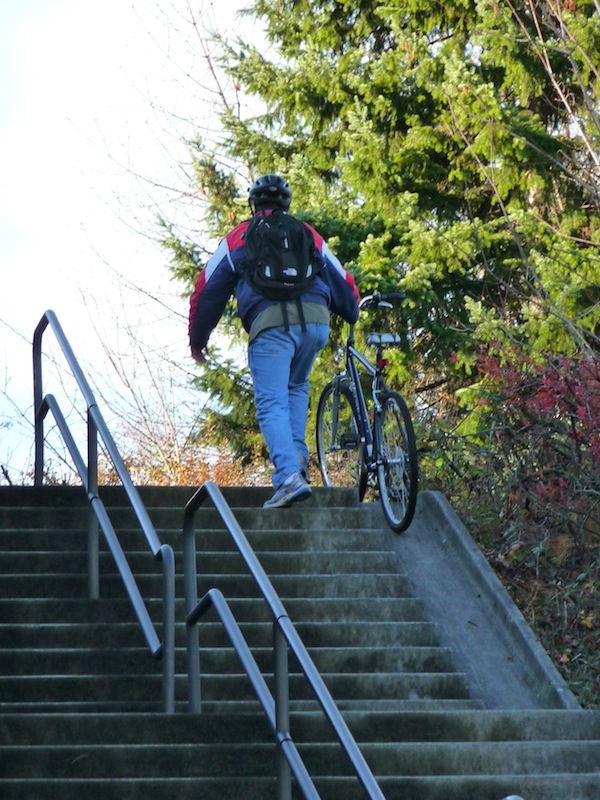Stairways to the Past
A discrete palette of stairway styles and materials tells something about life during various periods of Seattle stairway construction. For example, a lot of stairways in Queen Anne have an unusually classic look: they're much wider than elsewhere, with thick, low-slung concrete sides. These are deeply scored with decorative lines and topped with a broad, rounded cap that extends a couple of inches to either side, like cake icing or a muffin-top. These stairs reflect a "golden age" of stairway construction in the first decade of the 1900s in Queen Anne. This was one of Seattle's great boom periods - the Klondike Gold Rush era - when newly prosperous businessmen and civic leaders built grand homes on this hilltop suburb. With a little searching you can find one of the best examples, the "Grand Dame" stairs along Comstock Street, between 1st Avenue N and Queen Anne Avenue N.
 "Classic Era" stairway at Galer Street, between Queen Anne Avenue N and 1st Avenue N
"Classic Era" stairway at Galer Street, between Queen Anne Avenue N and 1st Avenue N
Another kind of stairway construction became dominant in the early 1940s, when the last of the electric railcars in Seattle were replaced in favor of wheeled buses. The City Engineering Department pulled up the old streetcar rails, along with the concrete panels that sat between them. These surplus rails and concrete slabs were gradually recycled back into the city's infrastructure, in the form of new and refurbished stairways and retaining walls:
 For stairways, the concrete slabs were stacked and staggered; small concrete bricks were placed under each slab to raise each step to a normal height (SDOT Photo)
For stairways, the concrete slabs were stacked and staggered; small concrete bricks were placed under each slab to raise each step to a normal height (SDOT Photo)
The upright posts shown here on the SW Thistle stairs are recycled streetcar rails, most likely put in place in the 1940s
For retaining walls, streetcar slabs were held in place with recycled steel rails driven into the ground (SDOT Photo)
Nowadays not every new or refurbished stairway looks alike, though there is a standard plan intended to make stairways a bit more walkable for a wider range of people. Stair replacements, like the new stairs in Cedar Park, are significantly wider, with double handrails that add a relatively small, 1 1/2 inch "gripping pipe". Some stairways include runnels that allow riders to roll their bikes alongside.
Old-school railing and joining
 New stairway construction (SW Genesee Street)
New stairway construction (SW Genesee Street)
 Bicycle runnel leads up to the I-90 trail near the East Portal Viewpoint in Mount Baker
Bicycle runnel leads up to the I-90 trail near the East Portal Viewpoint in Mount Baker
Thanks to John Buswell and Ainalem Molla of SDOT's Roadway Structures Division for answering our questions and sending us helpful info!
 Cedar Park,
Cedar Park,  Construction,
Construction,  Electric trolley,
Electric trolley,  Genesee,
Genesee,  Grand Dame,
Grand Dame,  Queen Anne,
Queen Anne,  Thistle,
Thistle,  bicycle,
bicycle,  railcar,
railcar,  runnel,
runnel,  streetcar |
streetcar |  Jake Jaramillo
Jake Jaramillo 


